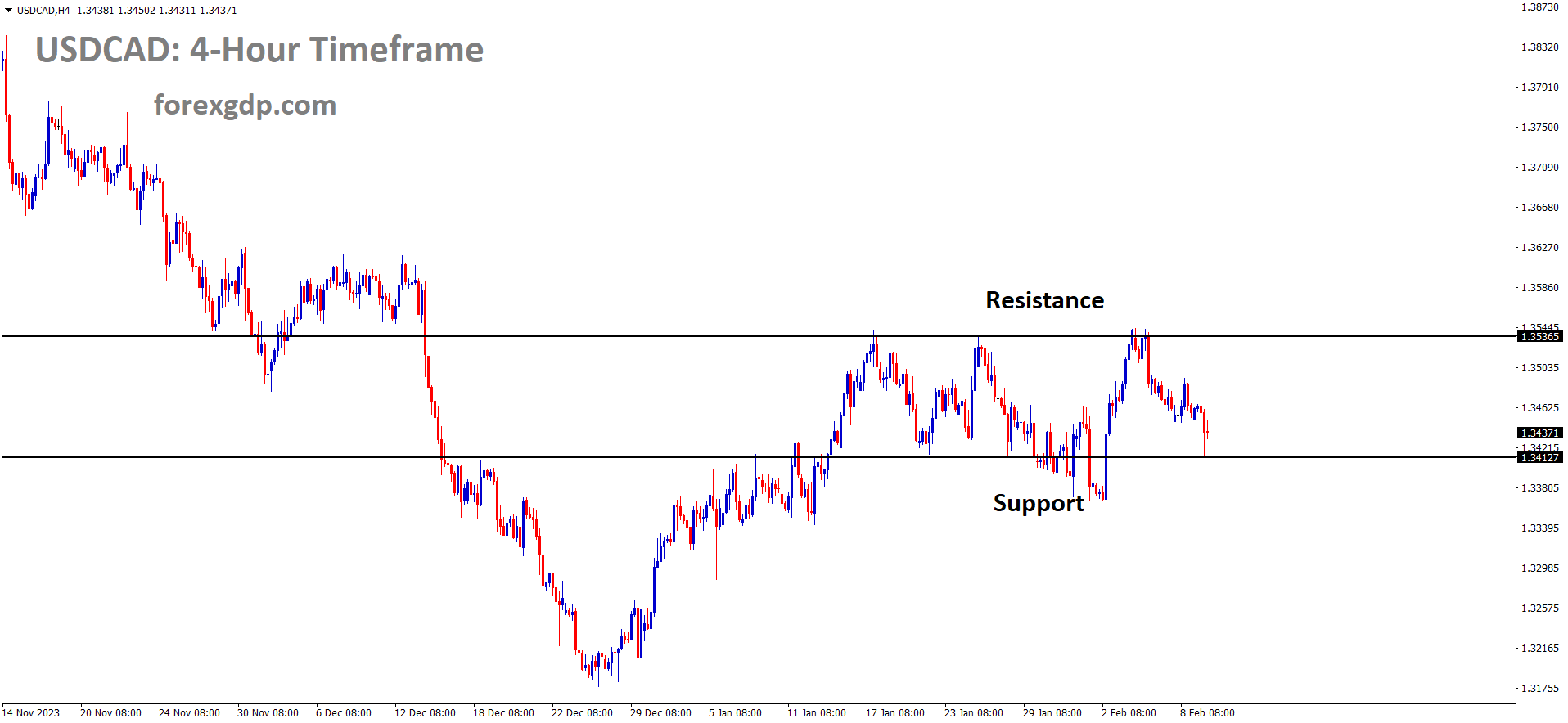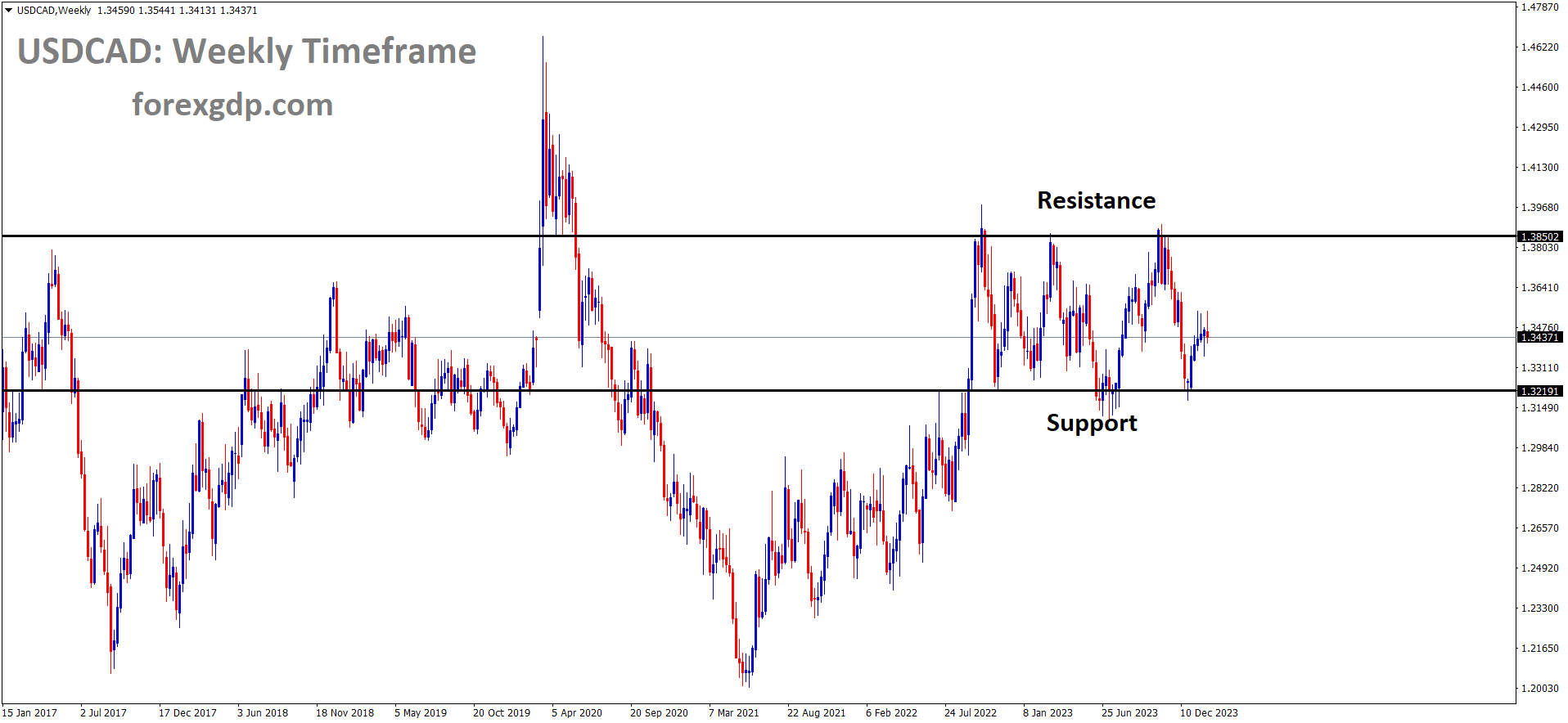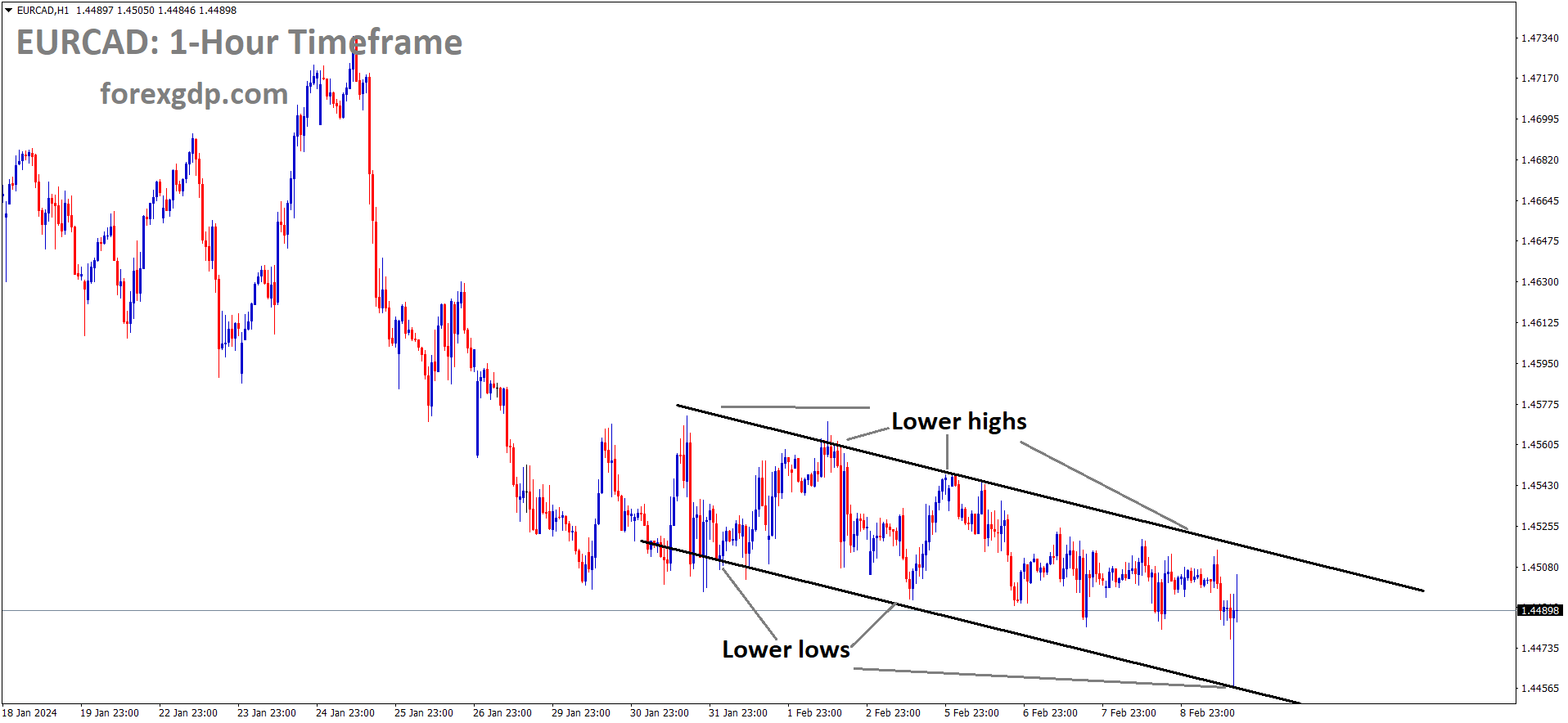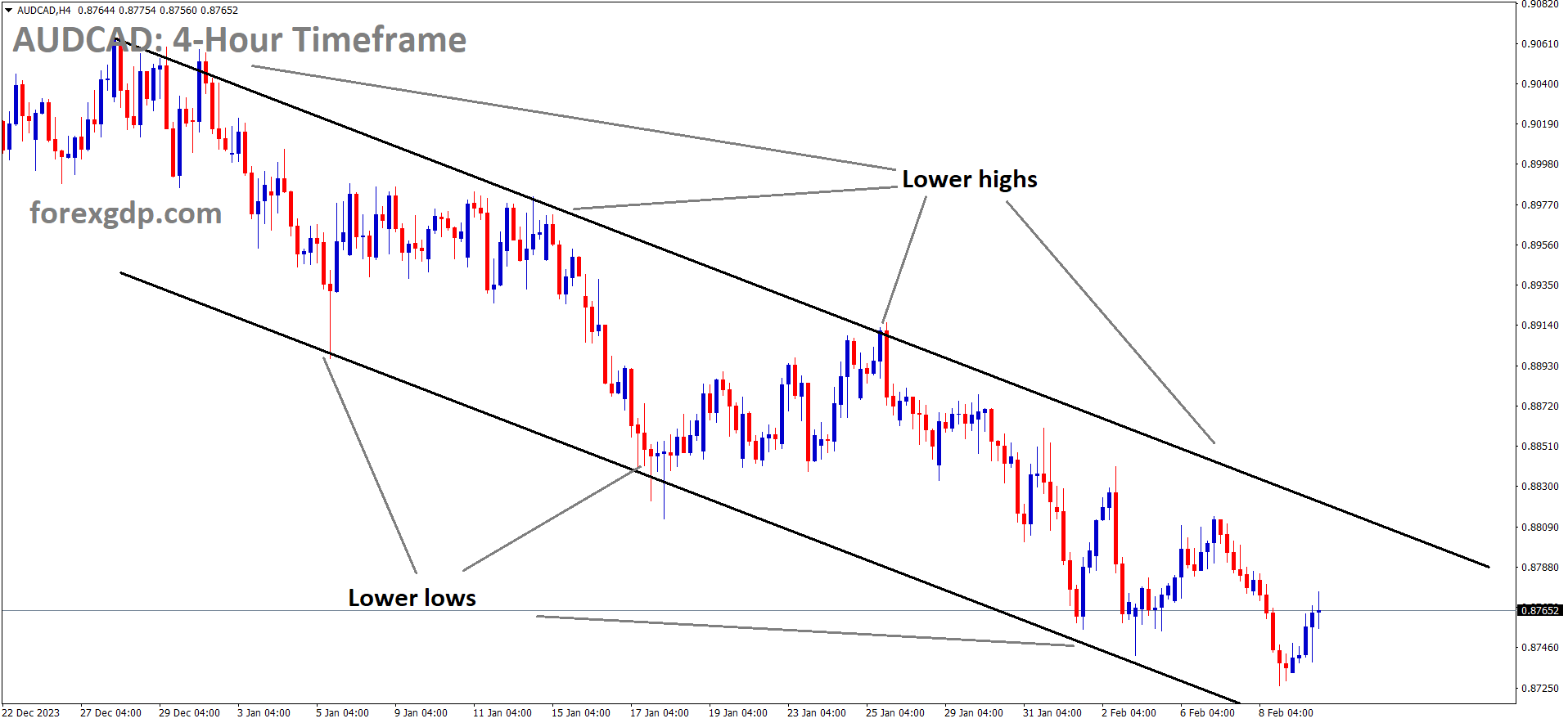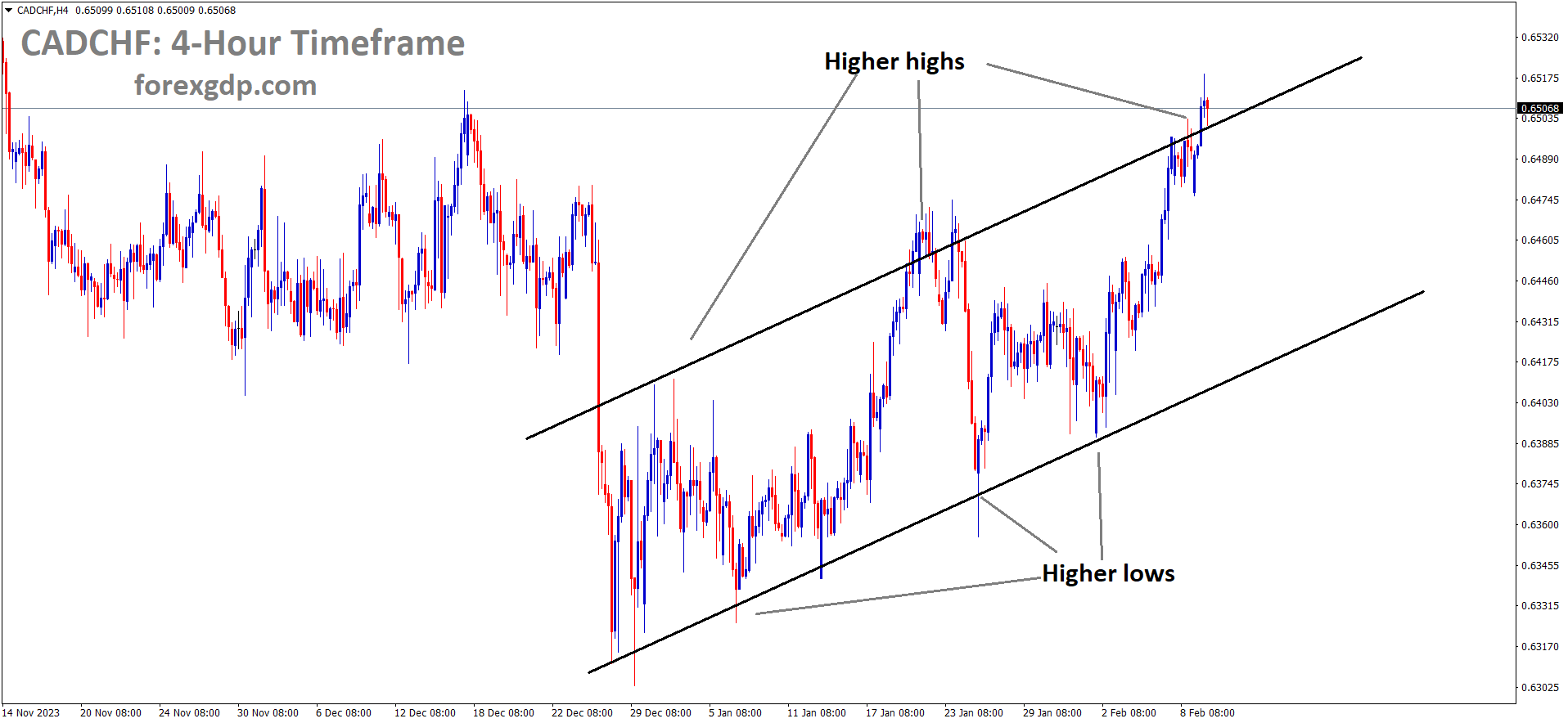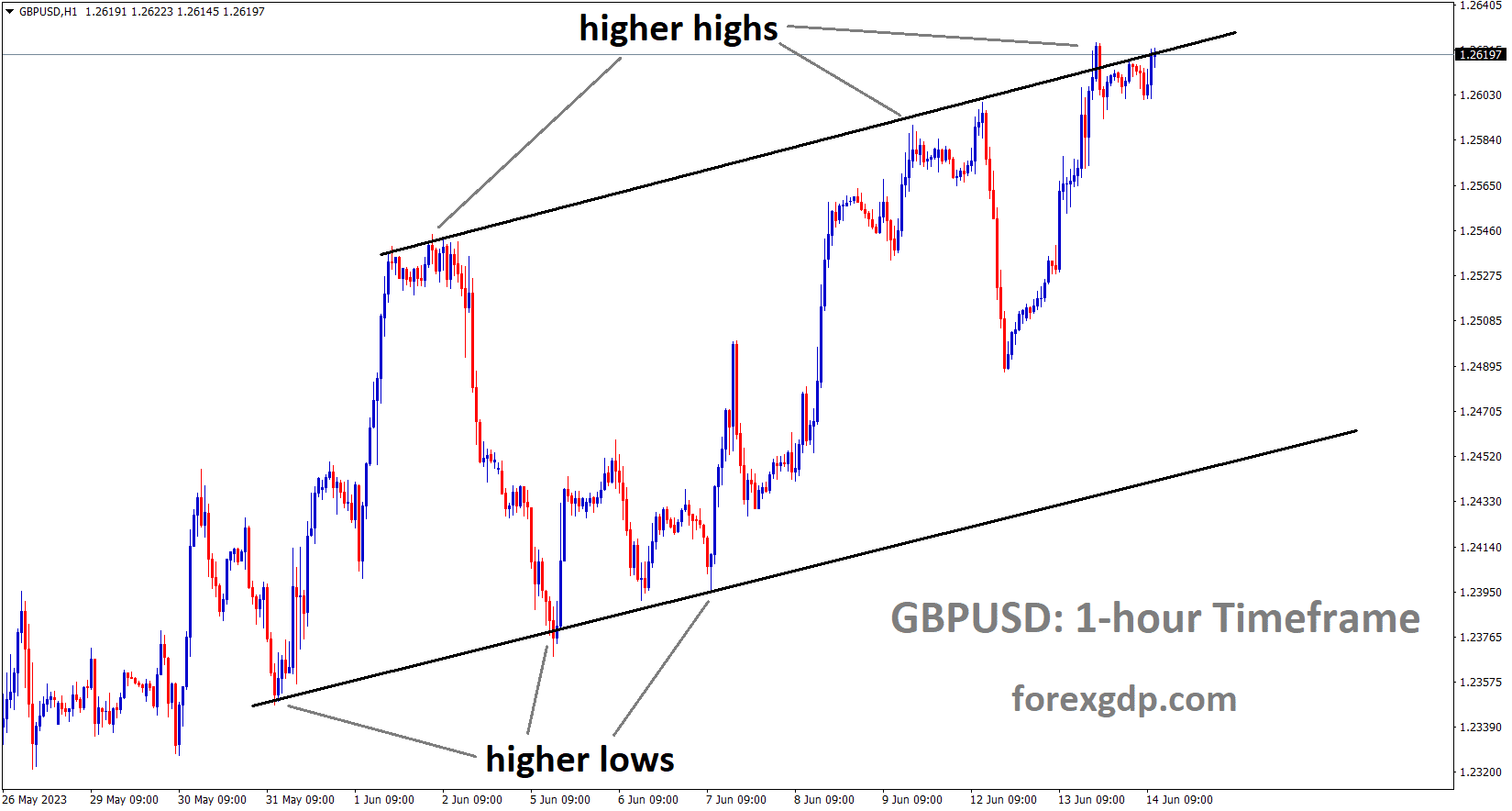CAD Surges After Positive Canadian Employment, Revised US CPI Data
Canadian employment change came at 35K in January month versus 15K expected, 12.3K printed in December month. Unemployment rate fell down to 5.7% from 5.8%. The bank of Canada is now confidence on holding rates due to hot labour market in Canada.
USDCAD is moving in box pattern and market has reached support area of the pattern
CAD Gains as Strong Employment Data Surprises Markets; Oil Prices Rise on Middle East Tensions
The USD/CAD pair faced downward pressure following better-than-expected Canadian Employment data in January. Statistics Canada reported a robust labor growth of 37.5K, surpassing the expected 15K and an upward revision of December’s reading to 12.3K. The Unemployment Rate unexpectedly dropped to 5.7%, contrary to the anticipated increase to 5.9%. A positive labor market outlook supports the Bank of Canada’s argument for maintaining current interest rates.
On the oil front, prices aim to extend their rally above $76.5, fueled by Israeli Prime Minister Benjamin Netanyahu’s rejection of a ceasefire proposal due to unacceptable terms by Hamas. This development is expected to escalate tensions in the Middle East, potentially disrupting oil supply. As Canada is a major oil exporter to the United States, higher oil prices benefit the Canadian Dollar.
USDCAD is moving in box pattern and market has rebounded from the support area of the pattern
The US Dollar Index faced pressure as the US Bureau of Labor Statistics (BLS) revised the monthly headline Consumer Price Index (CPI) from 0.3% to 0.2%. The revision, using new seasonal adjustment factors, accurately reflects consumer price behavior throughout the year. Meanwhile, Federal Reserve (Fed) policymakers, including Boston Federal Reserve Bank President Susan Collins, emphasize maintaining key rates until convinced that inflation will sustainably reach the 2% target, citing risks of inflation stalling due to strong economic growth.
USDCAD – Slides on Strong Canadian Employment
Canadian employment change came at 35K in January month versus 15K expected, 12.3K printed in December month. Unemployment rate fell down to 5.7% from 5.8%. The bank of Canada is now confidence on holding rates due to hot labour market in Canada.
Canadian Employment Surges, Wage Growth Declines; USD/CAD Dips
The Canadian dollar strengthened in the North American session following the release of Canada’s December employment report, with USD/CAD trading at 1.3432, down 0.20%.
The positive news from Canada revealed a significant increase in employment by 37,300 in January, surpassing the market estimate of 15,000. Additionally, December’s reading was revised upward to 12,300 from the initial estimate of 0.1 thousand. The unemployment rate also improved to 5.7%, below the market estimate of 5.7% and down from December’s 5.8%. However, average hourly earnings decreased to 5.3% year-on-year in January, compared to 5.7% the previous month.
EURCAD is moving in Descending channel and market has rebounded from the lower low area of the channel
The Bank of Canada (BoC) closely monitors these job metrics, noting the conflicting signals of robust employment growth and declining wage growth. Despite the strong labor market, the BoC is likely to maintain its current stance, delaying any rate cuts until the middle of the year or later. The central bank remains committed to its “higher for longer” approach, prioritizing the reduction of inflation to the 2% target.
Meanwhile, the Federal Reserve is pushing back against expectations for a rate cut in March, emphasizing that the battle against inflation is ongoing. Market expectations for a March rate cut have dwindled to 17%, down from over 70% in December, according to the CME’s Fed Watch tool.
Canada Adds 37K Jobs; Unemployment at 5.7% in January
Canadian employment change came at 35K in January month versus 15K expected, 12.3K printed in December month. Unemployment rate fell down to 5.7% from 5.8%. The bank of Canada is now confidence on holding rates due to hot labour market in Canada.
AUDCAD is moving in Descending channel and market has rebounded from the lower low area of the channel
Canada Gains 37,000 Jobs in January, Unemployment Dips to 5.7%: StatsCan Report
Statistics Canada’s Friday report revealed a positive shift in the Canadian economy, adding 37,000 jobs in January, marking the first decline in unemployment (5.7%) since December 2022. While surpassing economists’ expectations, the improvement was largely driven by a rise in part-time employment, offset by a loss of 12,000 full-time jobs, breaking the trend of three consecutive months with little change in the job rate.
CADCHF is moving in Ascending channel and market has reached higher high area of the channel
Workers’ Wages Surge 5.3% Amidst Inflation Concerns
With Canadians seeking higher compensation to combat inflation, wages have grown by 5.3% from a year ago. BMO chief economist Douglas Porter noted that the combination of a substantial job gain, a decline in the jobless rate, and persistent wage growth at five percent does not warrant an urgent call for rate cuts. CIBC senior economist Andrew Grantham concurred, stating that the data suggests the Bank won’t hastily cut interest rates, maintaining the expectation for a first rate cut in June.
January’s employment growth spanned various sectors, with wholesale and retail trade, as well as finance, insurance, real estate, rental, and leasing leading the way. However, accommodation and food services experienced the largest decline in employment.
Despite the previous trend of rising unemployment rates in 2023, reaching 5.8% in December, the current high interest rates have contributed to a positive employment scenario in Canada.
Don’t trade all the time, trade forex only at the confirmed trade setups.
Get more confirmed trade setups here: forexgdp.com/buy/


